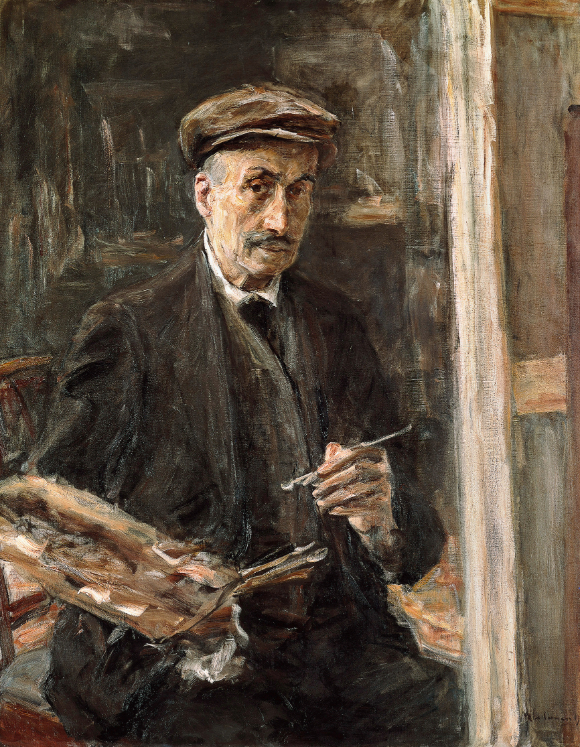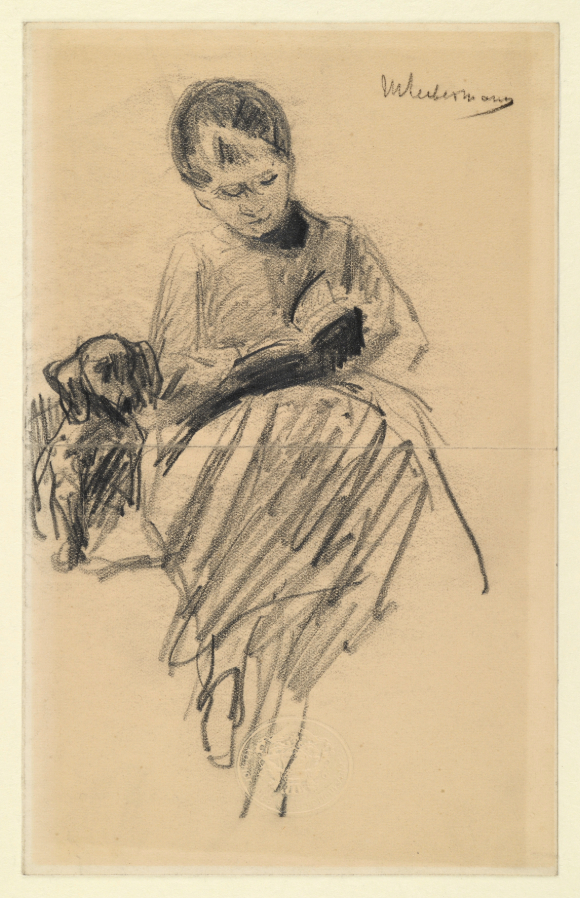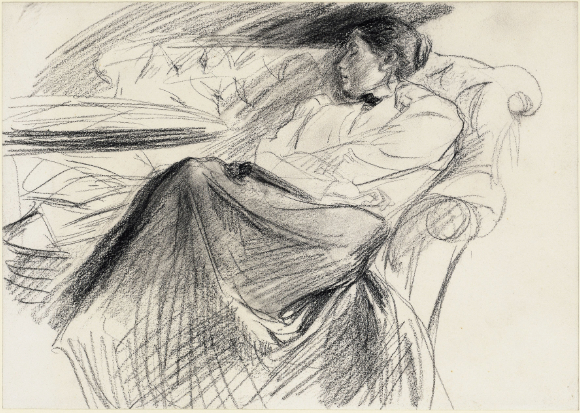Max Liebermann: 90 Years Since His Death
Max Liebermann was born in Berlin in 1847 to an upper-class Jewish family. As a young man he studied law and philosophy at the University of Berlin, but his greatest passion was always art. Between 1866 and 1868 he studied under the artist Carl Steffeck, and in 1868 he decided to pursue his dream and began studying painting, first in Weimar and later in Paris.[1]
In the summer of 1873 Liebermann spent time in France with members of the Barbizon School, whose realist influences distanced him from the romantic style popular in Germany at the time. In the following years he spent significant time in the Netherlands, focusing on scenes of workers’ lives—a period considered the height of his creative career.[2]

Max Liebermann, Self-Portrait with Sports Cap at the Easel, 1925. Oil on canvas, 112 × 89 cm. Alte Nationalgalerie, Berlin.
In 1884, Liebermann returned to Berlin after a time in the Netherlands and in Munich. That same year he married Martha Marckwald; the couple had one daughter, Käthe (born 1885).[3] Back in Berlin, Liebermann became involved in the local impressionist movement, co-founding the Berlin Secession and becoming a leading figure in the German avant-garde.[4]
In 1920, he was appointed president of the Prussian Academy of Arts in Berlin—a position he was forced to resign from under Nazi pressure in 1933.[5] His works were removed from public collections and confiscated from private ones. Liebermann transferred 14 of his most important works to the Kunsthaus Zürich and withdrew from public life.[6]

Max Liebermann, Daughter Käthe Reading with a Dachshund, 1901. Pencil on paper, 24.5 × 33.2 cm. Kupferstichkabinett, Berlin.
He died of natural causes in his home in Berlin in February 1935. News of his death was censored, and the Prussian Academy did not publicly acknowledge his passing. His funeral was held three days later at the Jewish Cemetery on Schönhauser Allee in Berlin.[7] Fearing Gestapo surveillance, the family discouraged mourners from attending, but around 100 friends and family members, including several prominent artists, were present nonetheless.[8]
Käthe Liebermann managed to escape to the United States in 1938, hoping to later bring her mother as well, but in March 1943 Martha received word that she was to be deported to the Theresienstadt concentration camp the following day. She chose to take sleeping pills. When authorities arrived the next morning, they found her unconscious; she died several days later at the Jewish Hospital in Berlin. The Liebermann estate, along with its contents—including Max Liebermann’s own works and his extensive art collection—was seized by the Nazis.[9] Hundreds of his artworks are considered missing to this day.

Max Liebermann, Martha Liebermann, Sleeping, circa 1895. Black chalk on paper, 25.5 × 35.6 cm, Kupferstichkabinett, Berlin.
The Wiener Library collection includes numerous books about Liebermann—some published during his lifetime—catalogues of his various exhibitions, and books he illustrated.
[1] Leo Baeck Institute. "Max Liebermann." Accessed April 24, 2025. https://www.lbi.org/collections/max-liebermann/.
[2] Ibid.
[3] Ibid.
[4] Monuments Men and Women Foundation. "WWII Most Wanted: Liebermann." Accessed April 24, 2025. https://www.monumentsmenandwomenfnd.org/join-the-hunt/wwii-most-wanted-liebermann.
[5] Ibid.
[6] Leo Baeck Institute, "Max Liebermann."
[7] Monuments Men and Women Foundation, "WWII Most Wanted: Liebermann."
[8] Saul Friedländer, Das Dritte Reich und die Juden (Munich: Beck’sche Reihe, 2010).
[9] Monuments Men and Women Foundation, "WWII Most Wanted: Liebermann."


